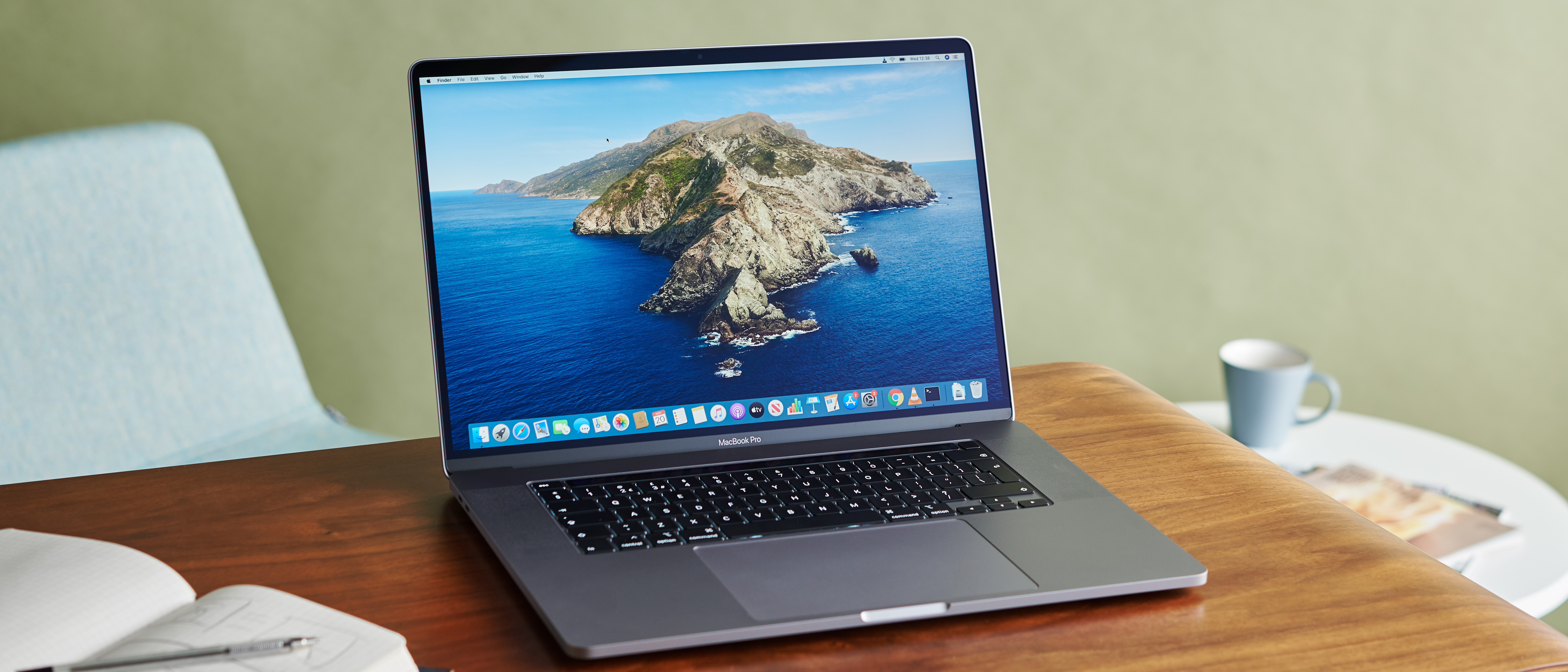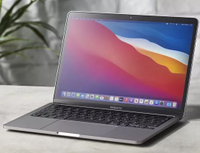TechRadar Verdict
The MacBook Pro 16-inch isn't just the most powerful MacBook Apple's ever made – it's also the best. By listening to its customers and taking on board the criticisms of previous models, Apple has made a MacBook Pro that improves on nearly every aspect of the iconic workstation. If you have the budget for it, this is one of the best laptops you can buy.
Pros
- +
Stunning 16-inch screen
- +
New and improved keyboard
- +
Excellent speakers
- +
Same price as previous model
Cons
- -
Expensive
- -
Limited to four Thunderbolt 3 ports
Why you can trust TechRadar
The new MacBook Pro (late 2020) is powered by Apple's first laptop processor, the M1. Benchmarks show that it makes a wonderful mobile workstation, a jaw dropping music production notebook and a groundbreaking video editing laptop.
Two minute review
The MacBook Pro 16-inch 2019 was the first real shot in the arm to Apple’s Pro lineup in a long time. Up to that point, Apple's most powerful series of laptops had been disappointing with its last few updates.
Over the past few years, the largest of the MacBook Pro line, in particular, had only been getting minor refreshes and small updates. And, the company’s previous effort to innovate its laptops gave users the infamous Butterfly switch keyboard. Needless to say, 2019’s MacBook Pro 16-inch was just what was needed. It’s given the Pro line the jumpstart Apple fans were looking for.
The MacBook Pro 16-inch literally steps up from the MacBook Pro 15-inch 2019, not to mention set the stage for the successful release of the 13-inch MacBook Pro 2020. And, some of the missteps of earlier models have been corrected here as well, with some crucial updates like a stellar looking screen.
If you’ve been holding off on upgrading your MacBook Pro, you have a good reason to finally make the leap. The 16-inch MacBook Pro delivers “more of what (fans) love.”
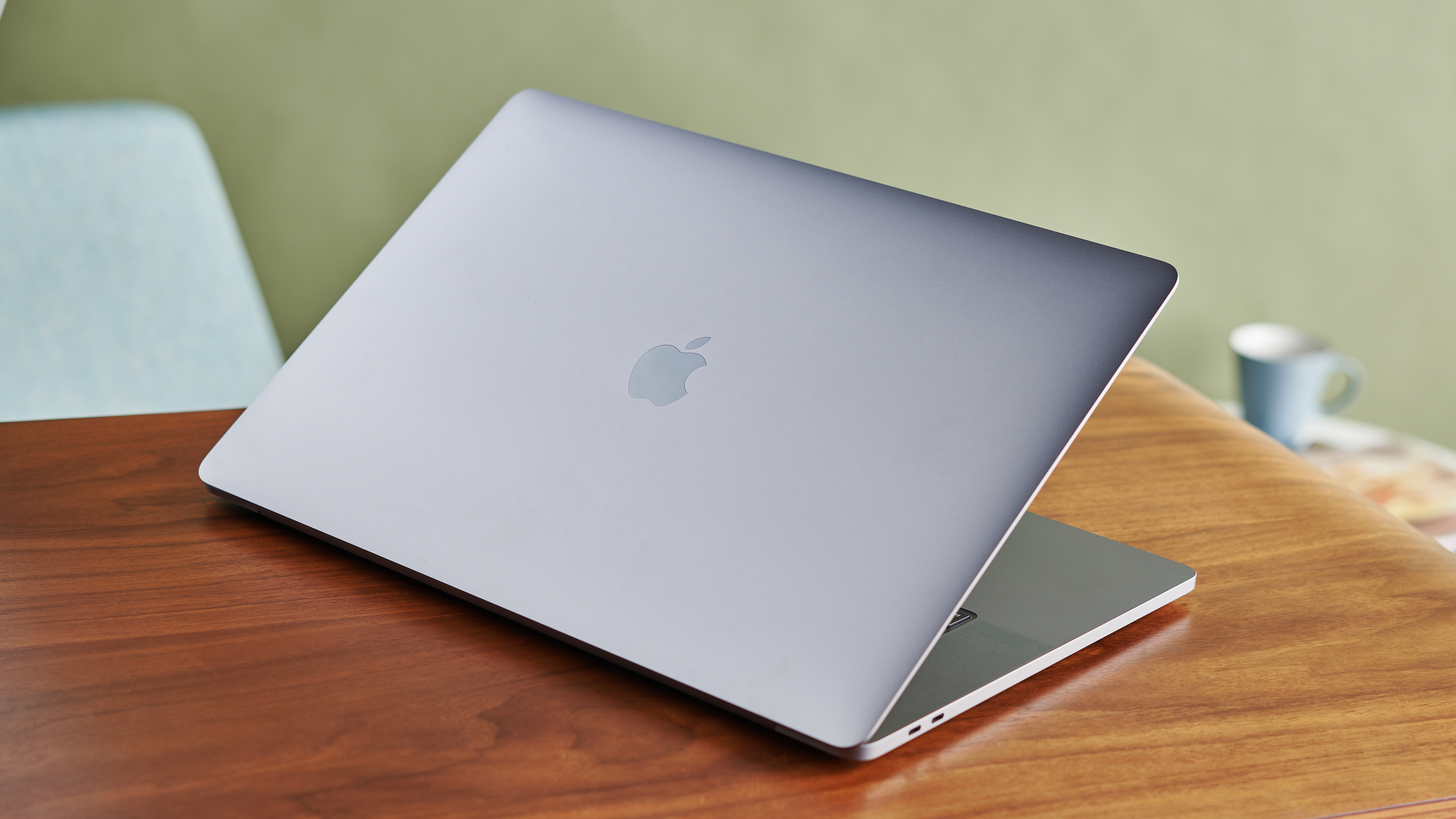
Those who were holding off buying a new MacBook Pro until the keyboard issues were sorted will definitely be pleased with the new 16-inch MacBook Pro. Hopefully, all these improvements on the new keyboard in the MacBook Pro will find its way onto regular MacBooks and MacBook Airs soon.
Further upgrades are found in the internal components, with 7nm AMD Radeon Pro 5000M series graphics cards making their debut, giving this mobile workstation some seriously impressive graphical grunt. And, for the first time ever, the MacBook Pro 16-inch can be configured with up to 64GB of RAM and up to 8TB of SSD storage. These two updates make this laptop a seriously formidable performer when it comes to graphic-intensive tasks like rendering videos.
The battery life has been boosted with a 100-watt-hour battery (16 WH larger than the previous models, and now the largest capacity laptop battery the FAA will allow on flights) – and in our tests, we were seriously blown away by how long the MacBook Pro 16-inch model lasted between charges. You really don’t have to suffer from miniscule battery life just because you’re using a powerful laptop with the new MacBook Pro. That’s a compromise many of its rivals ask us to make.
Much-improved speakers (seriously, you need to hear them) and built-in microphone both round out the 16-inch MacBook Pro as a seriously capable mobile workstation – and one where you no longer feel the need to plug in too many external devices. This, along with an almost identical thin and light design that we’ve come to love from the MacBook, makes the MacBook Pro 16-inch a truly portable pro laptop.
And, we haven’t even gotten to the screen yet. Oh, that screen. Apple’s move to 16-inches hasn’t resulted in a compromise in image quality, with the resolution being bumped up to 3,072 x 1,920 and a pixel density of 226 pixels per inch.
That’s a fairly decent jump over the 15-inch model’s 2,880 x 1,800 resolution, which offered a pixel density of 220ppi. A larger screen with an increased pixel density is very welcome indeed. But, there’s also the fact that the increase in screen size hasn’t made the 16-inch model much larger than the 15-inch model, thanks to the much thinner bezels surrounding the screen.
There’s a lot to love about the 16-inch MacBook Pro 2019, and not much to dislike. The lack of expansion outside of the four Thunderbolt ports remains a disappointment to pro users. But, the laptop also makes up for that by adding features that make you less likely to need to plug in external tools. Who needs an external hard drive when you have 8TB of SSD storage? There’s the matter of the price, which is admittedly pretty steep. However, in reality, it actually costs the same as the previous model, which might annoy anyone who just bought one of those.
Overall, Apple has improved on almost every aspect of the MacBook Pro, and addressed the complaints of people (like us) who were disappointed that recent MacBook Pro releases haven’t been revolutionary or exciting. The MacBook Pro 16-inch shows that Apple still loves the MacBook and has some exciting ideas for its future.
Price and availability
Here is the 16-inch MacBook Pro (2019) configuration sent to TechRadar for review:
CPU: 2.3GHz Intel Core i9 processor (octa-core, up to 4.8GHz)
Graphics: AMD Radeon Pro 5500M with 4GB of GDDR6
RAM: 16GB (2,666MHz DDR4)
Screen: 16-inch, 3,072 x 1,920 Retina display (backlit LED, IPS, 500 nits brightness, wide color P3 gamut)
Storage: 1TB SSD
Ports: 4x Thunderbolt 3 (USB-C), 3.5mm headphone jack
Connectivity: 802.11ac Wi-F, Bluetooth 5.0
Camera: 720p FaceTime HD webcam
Weight: 4.3 pounds (2kg)
Size: 0.64 x 14.09 x 9.68 inches (1.62 x: 35.79 x 24.59cm; W x D x H)
Perhaps one of the most pleasant surprises about the MacBook Pro 16-inch is its price. Now, don’t get too excited – this isn’t a cheap laptop. Far from it. The 16-inch MacBook Pro is, like other MacBook Pros, a very pricey laptop. But what’s surprising is that the base model starts at $2,399 (£2,399, AU$3,799, AED 9,999) for a 6-core Intel Core i7 processor, AMD Radeon Pro 5300M 4GB GPU, 16GB of RAM and a 512GB SSD.
This, you may have noticed, is the same price as the 2019 model of the MacBook Pro 15-inch, which for the same price comes with a 6-core 9th generation Intel Core i7 processor, Radeon Pro 555X with 4GB of GDDR5 memory, 16GB RAM and 256GB SSD storage.
The fact that you get double the storage and better graphics, along with all the other new features of the new MacBook Pro, such as that larger screen, for the same price is remarkable. For anyone who was holding out buying a new MacBook Pro, your patience will have been rewarded.
However, that also means that anyone who bought the 15-inch MacBook Pro – which only released back in June 2019 – could feel rather aggrieved at paying the same money for less. The fact that Apple is no longer selling the 15-inch model on its website (you can now only choose between the MacBook Pro 13-inch 2019 and the MacBook Pro 16-inch) could compound the feeling that they’ve bought an expensive product that’s outdated a mere six months after it launched.
There is also a higher-end model that comes with a 2.3GHz 8-core Intel Core i9 processor, AMD Radeon Pro 5500M, 16GB RAM and a 1TB SSD for $2,799 (£2,799, AU$4,399, AED 11,679). Again, this is the same price as the high end 15-inch MacBook Pro from earlier in 2019.
As with previous models, you can configure the base models with more powerful hardware, including upping the storage to that incredible 8TB, and packing the laptop with up to 64GB of RAM. The fully specced-out MacBook Pro 16-inch is a seriously powerful device – but also an expensive one as well, costing $6,099 (£5,769, AU$9,679, AED 25,539).
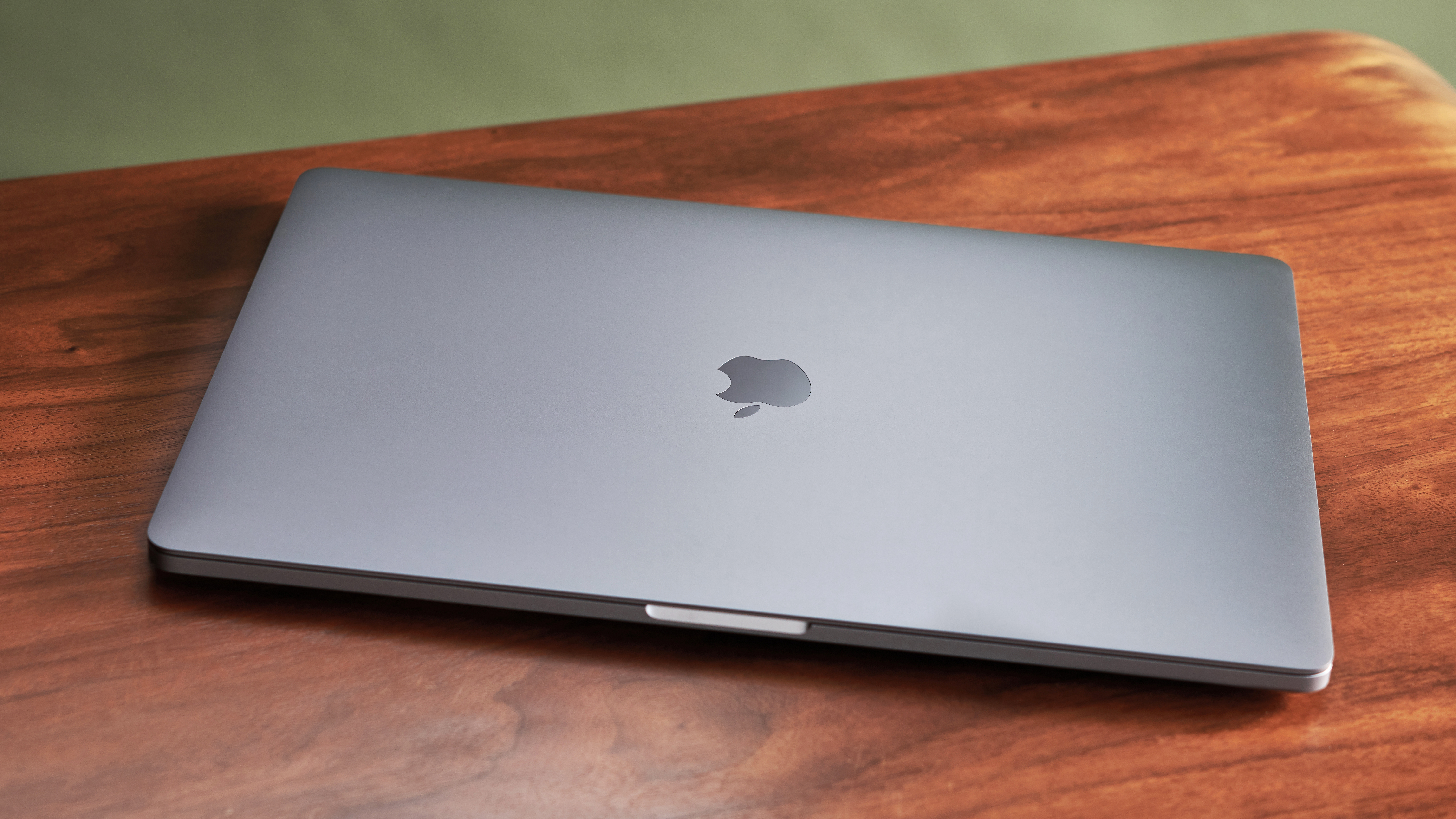
Design
At first glance, the 16-inch MacBook Pro doesn’t look all that different from the 15-inch model. That in itself is a remarkable achievement, considering the larger display the new MacBook Pro features.
Now the footprint of the MacBook Pro 16-inch is bigger than the 15-inch, with dimensions of 0.64 x 14.09 x 9.68 inches (1.62 x: 35.79 x 24.59cm) versus the 15-inch’s 0.61 x 13.75 x 9.48 inches (1.55 x 34.93 x 24.07cm; W x D x H), but it’s not enough to be that noticeable. It’s certainly impressive.
So, how did Apple manage this? On opening the MacBook Pro 16-inch, the answer is evident, with the bezels that surround the screen much thinner than previous models. Not only has this allowed Apple to fit a larger screen into the new MacBook Pro without drastically increasing the overall size of the laptop, but it makes the new MacBook Pro look and feel a lot more modern. It also ensures that all your attention is directed on that gorgeous screen.
And the screen – it really is a beauty. It’s the largest display on a MacBook since the MacBook Pro 17-inch was discontinued way back in 2012. It’s clear that Apple has heard feedback from its pro users that want a larger display, even at the expense of portability, and has acted.
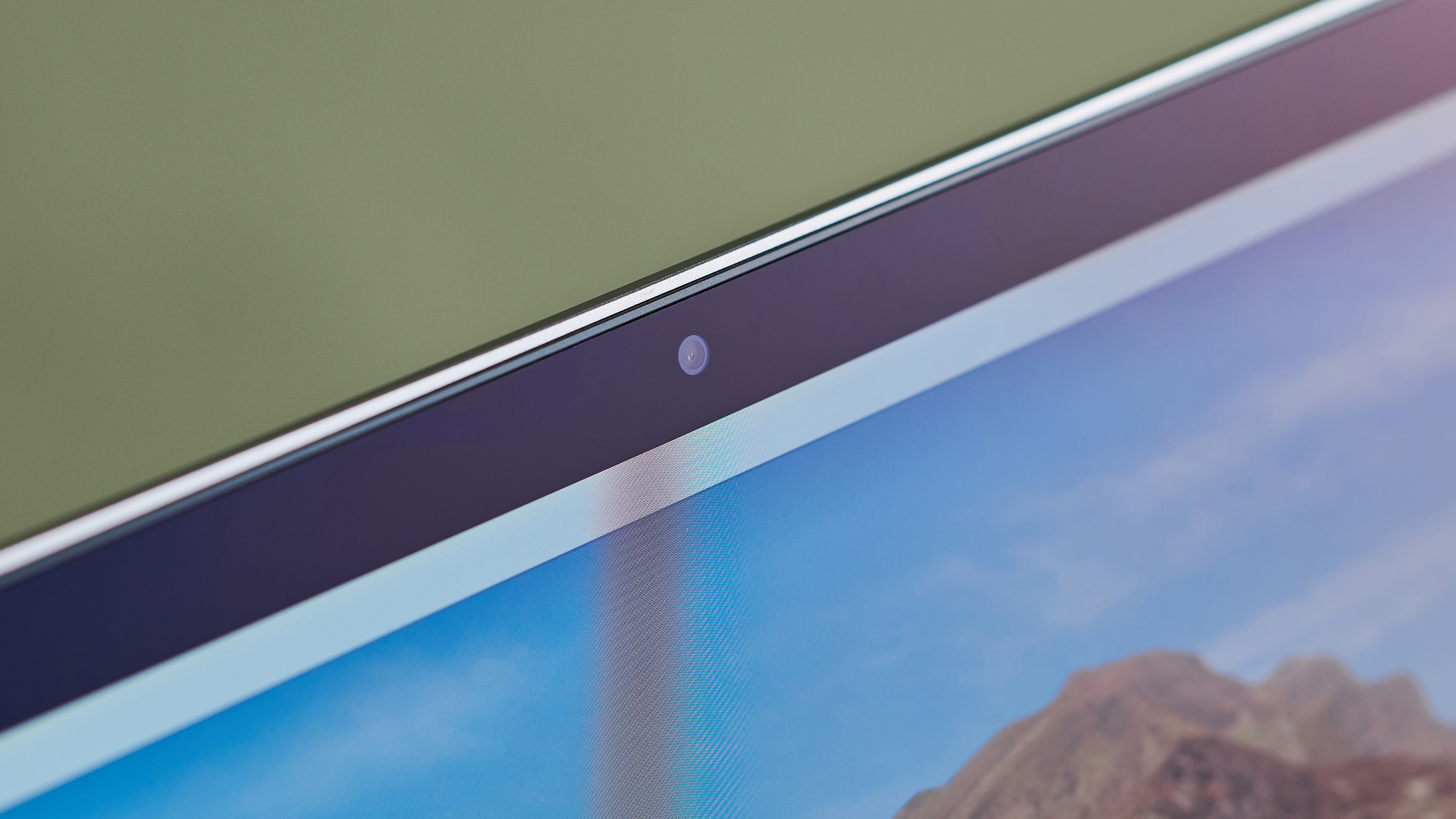
We’re glad it has. Even with the larger display, Apple has made sure that image quality remains high, as it has also upped the resolution to 3,072 x 1,920. The result is a beautifully crisp display that looks sharp and vibrant. It’s not quite as pixel-packed as the Razer Blade 15 Studio Edition’s screen, which has a 4K resolution of 3,840 x 2,160.
The Razer Blade 15 Studio Edition’s screen is definitely the one to beat at the moment when it comes to pro laptops. It’s an OLED screen that’s factory calibrated and absolutely stunning. Not only does it beat the MacBook Pro 16-inch when it comes to resolution, but it’s also a touch screen as well.
Does that matter on a pro device? Well, one of the big selling points of the MacBook pro 16-inch, when we spoke to Apple, was how it runs macOS Catalina, which allows you to use an iPad as a second screen using the Sidecar feature. There are a number of creative apps that allow you to use the iPad along with the Apple Pencil stylus to control the apps via touch.
This is a great way of allowing creatives to interact with their tools in an intuitive way. However, it also requires an iPad – which is an additional expense. If the MacBook Pro came with a touchscreen, that wouldn’t be an issue. As Razer has shown, it’s indeed possible to include a touchscreen without compromising image quality – though there is a hit when it comes to price.

The keyboard has also been tweaked, thankfully replacing the Butterfly switches of previous models with the Scissor switch found in the popular iMac Magic Keyboard.
This should eliminate the problems that the Butterfly keyboards experienced (where keys became ‘stuck’ or unresponsive when dust or other debris found their way between the keys) – and in a recent teardown of the MacBook Pro 16-inch, iFixit found that Apple no longer includes a protective membrane underneath the keys, which it included in other recent MacBooks in a bid to fix the issues the Butterfly switches were encountering.
By not including the membrane, it appears that Apple is confident that the new keyboard of the MacBook Pro 16-inch will not have these problems.
The Scissor switches also allow the keyboard of the 16-inch MacBook Pro to have a decent amount of travel when the keys are pressed, while still keeping the MacBook Pro as slim as possible.
The result is immediately apparent: the MacBook Pro 16-inch’s new keyboard is a joy to type on, and a much more responsive and satisfying experience. When moving back to the older MacBook Pro 15-inch’s keyboard, it felt rather flat in comparison. We couldn’t wait to get back to using the newer keyboard. For anyone who does a lot of typing, the new and improved keyboard of the MacBook Pro 16-inch will be a huge selling point.
Further tweaks to the keyboard include shortening the Touch Bar and including a physical Esc key again. This might not be a big difference for a lot of people, but for many – especially coders – this will be a welcome change – and again shows that Apple has been listening to the requests of its customers.

The Touch ID button, which allows you to log into the MacBook Pro or authorize Apple Pay payments, has also been shifted slightly so it’s easier to find.
The directional keys have also been changed, and are now back in their classic ‘inverted T’ layout. Again, it’s a more intuitive layout that lets people hit those keys without having to look, and it’s been a long-requested feature for some people.
These are all very welcome changes to the design, which shows that Apple has been listening. These changes improve the performance and usability of the MacBook Pro, without radically changing the look or feel of the laptop.
However, there is one thing about the MacBook Pro 16-inch that we really wish Apple would change – and that’s the port selection. Once again, Apple has seen fit to only include four Thunderbolt 3 USB-C ports and an audio jack.
Now, those ports are perfectly fine for regular users who have modern peripherals with the right connectors. However, the MacBook Pro 16-inch is a laptop aimed at professionals, and the lack of ports is frustrating. Many people have older peripherals that they rely on for work that won’t plug into the Thunderbolt 3 port without an adapter.
Having a standard sized USB port along with a memory card reader, for example, would make the MacBook Pro 16-inch a much more versatile device for professionals. Instead, you’ll need to buy an adapter to plug those devices into the MacBook Pro. It’s an added expense, and not a particularly elegant solution. It’s a remnant of Apple’s ‘form over function’ ethos that was popularized by Jony Ive.
You can forgive consumer-orientated products like the MacBook Air or iPhone 11 for sacrificing ports and features in a bid to look as thin and sexy as possible, but with a prosumer device like the MacBook Pro 16-inch, it continues to feel like the wrong choice. There are an increasing number of MacBook Pro competitors, like the Razer Blade 15 Studio Edition, which offer a much wider selection of ports.
It’s a shame that Apple appears unwilling to budge on this, as it’s the one area where the MacBook Pro 16-inch doesn’t feel like an improvement over what’s come before.
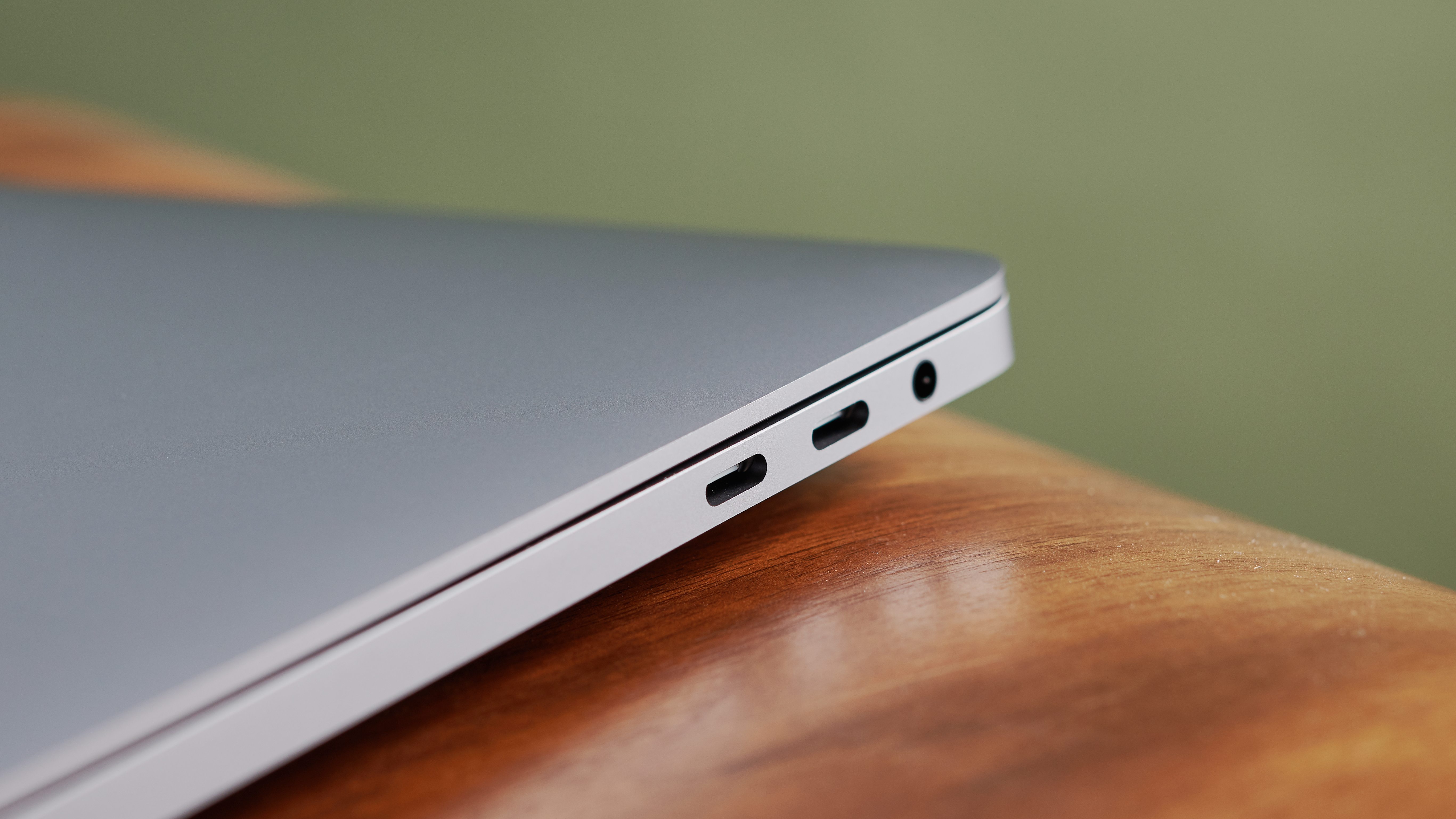
Performance
Here’s how the 16-inch MacBook Pro (2019) performed in our suite of benchmark tests:
Cinebench CPU: 3,157 points Graphics: 122.31 fps
Geekbench 4 Single-Core: 5,375; Multi-Core: 28,332
Geekbench 5 Single-Core: 974; Multi-Core: 6,035
Battery Life (TechRadar movie test): 11 hours and 41 minutes
The MacBook Pro 16-inch is the most powerful MacBook ever made – especially if you splash out on the fully-loaded option. It’s pricey, but with an 8-core Intel processor, 64GB RAM and 8TB SSD, you’ll not get another laptop quite like it.
Sadly we didn’t get to play with that version – instead we’ve reviewed the high-end base configuration, with a 2.3GHz 8-core Intel Core i9 processor, AMD Radeon Pro 5500M, 16GB RAM and 1TB SSD. This is still an incredibly powerful device, and one that many people will go for if you need a laptop for video editing. For many others, it’s wildly over-specced for their needs.
So, the MacBook Pro 16-inch makes short work of the benchmark tests we threw at it. The processor is similar to the one in the 15-inch model we reviewed, but clocked slightly lower. Also, the new graphics card means this is a formidable laptop when it comes to graphics rendering – and it means it can push the higher resolution without any degradation in performance compared to the 15-inch model.
In day-to-day use, the MacBook Pro 16-inch is again a joy, with macOS Catalina feeling quick and smooth, with apps loading in a flash. At all times, you know you’re working on a very capable laptop, and during our time with it, we didn’t see it stumble when it came to performance.
We’d like to also point out that even under load, the MacBook Pro 16-inch kept impressively quiet. We’ve used other laptops – including some MacBooks – that make an awful lot of noise when the hardware gets taxed and the fans kick in. It’s a testament to the new thermal design Apple has made, allowing the MacBook Pro 16-inch to remain cool. We also didn’t notice any throttling issues (where the CPU speed is lowered to prevent overheating, which impacts performance) during our time with it – something some previous MacBook Pros have suffered from.
As a workstation, then, the performance of the MacBook Pro 16-inch is very impressive, though owners of the 2019 model of the MacBook Pro 15-inch shouldn’t feel the need to upgrade: the performance increase isn’t that big. But that’s not too surprising, considering how recently the 15-inch model was launched. But for people who have been holding out, this is the definitive MacBook Pro to get.
However, the performance of the the MacBook Pro 16-inch shines in other ways as well – especially media playback. We’ve covered the screen quality enough, but it really does make videos and photos look phenomenal.
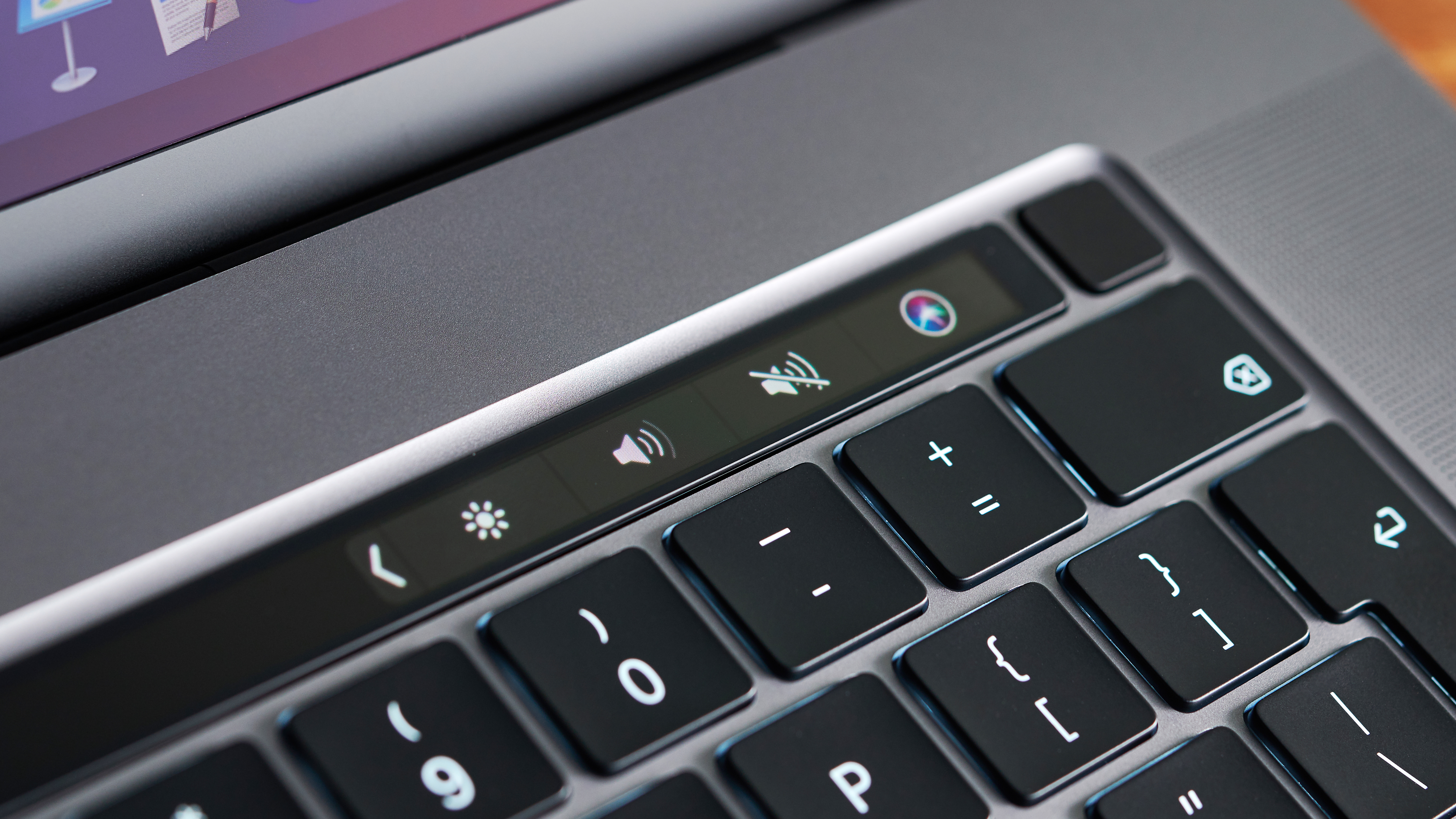
The new built-in speakers are also excellent. There are six speakers in the MacBook Pro, with Force Feedback-enabled woofers. This allows the MacBook Pro to produce bass sounds without extraneous vibration causing unwanted distortion.
The results are superb, with incredibly clear sounds coming from relatively small speakers. If you’re used to tinny sounds pumped out of weak laptop speakers, you’ll be seriously impressed with the sound quality of the MacBook Pro 16-inch. It was loud enough to fill a decently sized room without distortion.
Music sounds fantastic, but watching movies and TV shows is also a highlight, with a wide soundstage and clear stereo separation that can trick you into thinking you’re listening to two external speakers positioned far apart from each other. There’s also a pretty decent virtual surround effect as well. We were very impressed.
While music producers and film editors will still probably want to hook up external speakers or headphones, it does mean if you’re on the move, you could easily make do with the MacBook Pro 16-inch’s speakers without having to carry additional equipment around with you. These are easily some of – if not the – best speakers we’ve heard on a laptop. Apple has done a great job here.
The new mic array in the MacBook Pro 16-inch is also much improved. We were impressed with the clarity and quality of recorded audio, and like the speakers, it means if you’re out and about without an external microphone, settling for the built-in mics is no great hardship.
We’ve complained about the lack of ports making it difficult to plug in external peripherals into the MacBook Pro 16-inch, but the new speakers and mics, along with improved keyboard and huge storage, means you’re less likely to need to plug things in. Impressive.
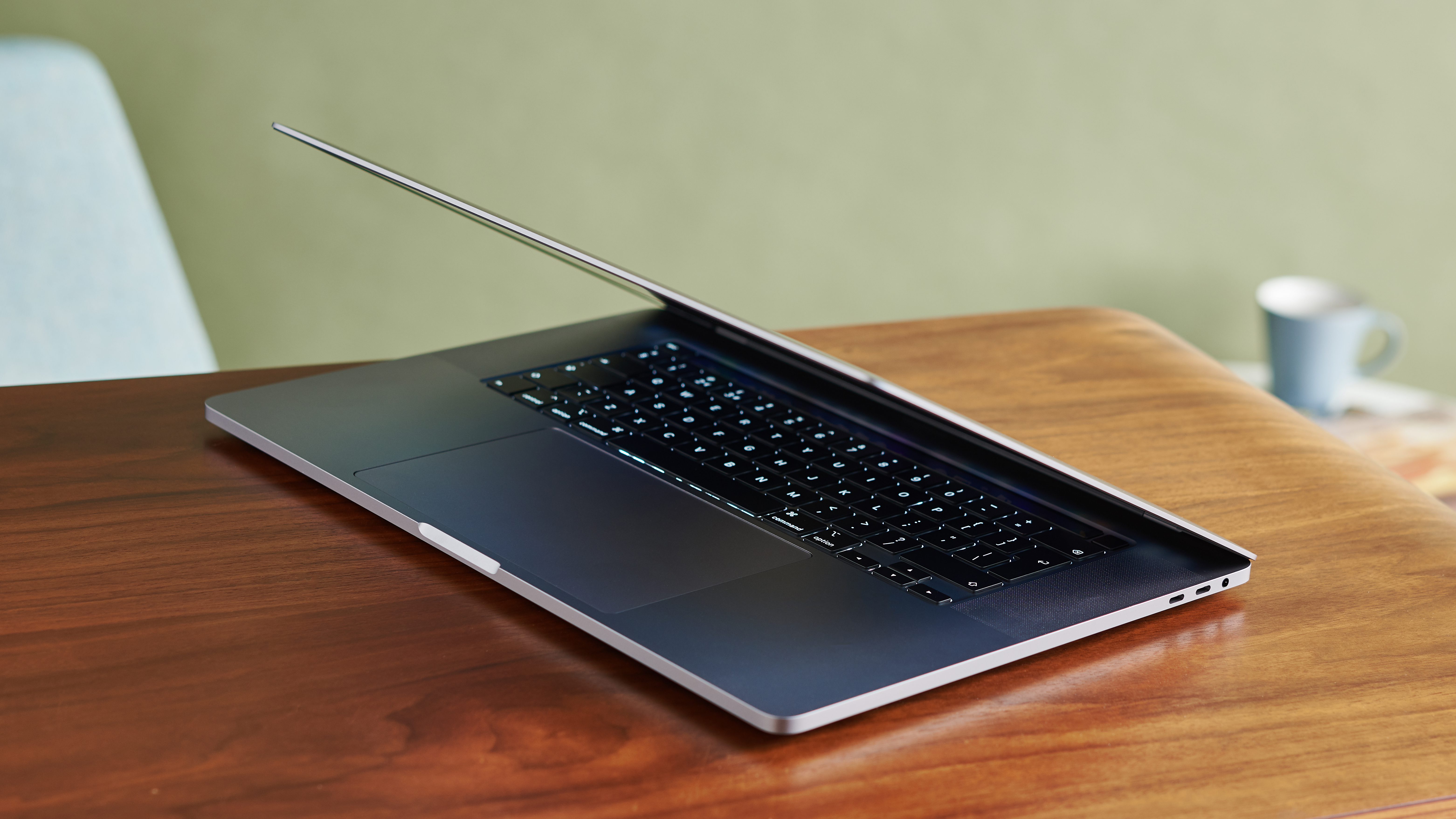
Battery life
MacBooks have always had impressive battery life, especially compared to Windows laptops, and while you could almost forgive the MacBook Pro 16-inch for having a shorter battery life due to its larger screen and more powerful components – but there’s no need to.
In fact, Apple has managed the remarkable feat of making battery life longer. By its estimates, it gives around an hour more battery life compared to the 15-inch model, and in our tests we found that to be pretty accurate, with it lasting 11 hours and 41 minutes, with a looped 1080p video at 50% screen brightness.
That’s a huge increase over the 7 hours and 36 minutes the MacBook Pro 15-inch scored in the same test. While the 15-inch model could just about get you through a work day without needing a charger, the 16-inch positively blows past it. Of course, the more strenuous tasks you perform, the faster the battery life depletes, but it’s still a remarkable achievement.
Meanwhile, the Razer Blade 15 Studio Edition managed just 5 hours and 28 minutes in the same test. No competition, really.
Buy it if…
You want the most powerful MacBook ever
Apple has done an amazing job of improving most aspects of the MacBook Pro with the new 16-inch model, and while it’s not a generational leap in terms of power compared to the 15-inch model, if you’re after the most powerful MacBook ever made, this is it.
You want a workstation laptop that lasts a whole workday
The battery life on the MacBook Pro 16-inch is very impressive, considering the powerful components and larger screen. Depending on the workload, this will keep you going throughout the work day on a single charge – though any heavy video rendering and the like will obviously drain the battery faster.
You loved everything about the MacBook Pro – but want more
Apple set out to give its customers “more of what they love” with the MacBook Pro 16-inch, and it succeeded. You get that classic MacBook Pro form factor, with not much extra size or weight added, along with a bigger screen, more powerful components, a better keyboard, better speakers and much more.
Don’t buy it if…
You’re on a tight budget
The MacBook Pro 16-inch costs the same for the base model as the previous 15-inch model. That’s to be commended, but make no mistake – this is still a very expensive laptop. If you’re on a budget, there are more affordable options out there.
You don’t need the power
Part of the reason that the MacBook Pro 16-inch is so expensive is because of the powerful cutting edge components included. That means if you don’t need that amount of raw power (and unless you’re using it for professional video editing, music producing, 3D modelling and the like, then you won’t), you’re better off buying the cheaper MacBook Pro 13-inch, or the MacBook Air.
You prefer Windows
If you’re a Windows die-hard and hate all things Apple, then this is not the laptop for you. However, you may want to reconsider – macOS Catalina is not that difficult to get the hang of, after all. Otherwise, there are some good Windows-based alternatives out there.
- If you choose to buy an Apple MacBook Pro, check out our Apple discount codes to save money on your purchase.

Matt is TechRadar's Managing Editor for Core Tech, looking after computing and mobile technology. Having written for a number of publications such as PC Plus, PC Format, T3 and Linux Format, there's no aspect of technology that Matt isn't passionate about, especially computing and PC gaming. He’s personally reviewed and used most of the laptops in our best laptops guide - and since joining TechRadar in 2014, he's reviewed over 250 laptops and computing accessories personally.
